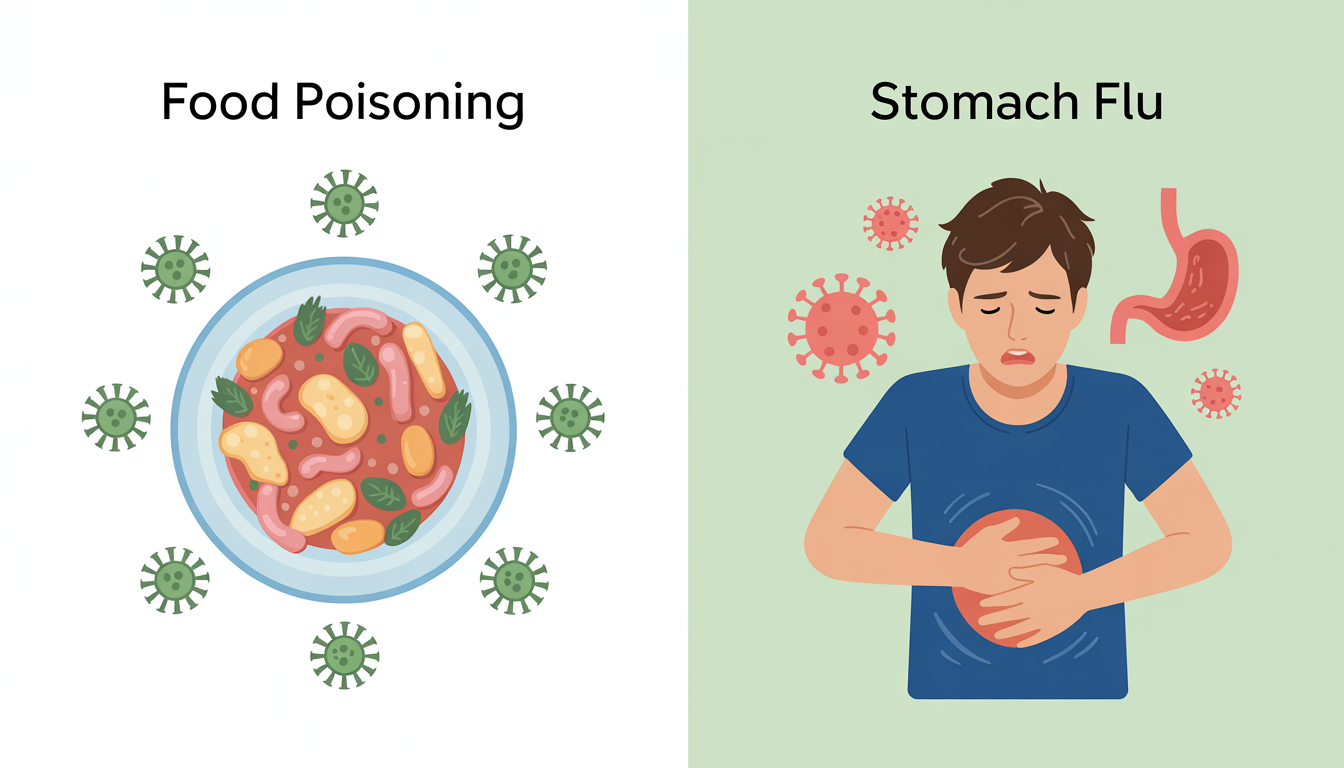Can You Get Food Poisoning From Pork?
Yes, it is very possible to contract food poisoning from eating pork. When pork is not properly handled or cooked, it can harbor a wide variety of bacteria that can make you sick. There are many unsafe ways to prepare pork, including:
- Not washing hands and cooking surfaces while preparing food.
- Leaving pork out of the refrigerator or improperly refrigerating it.
- Not cooking pork to an internal temperature high enough to kill bacteria.
- Cross-contamination with other potentially dangerous substances, especially raw meat and eggs.
All of these culinary mistakes, no matter how small they may seem, can result in bacterial growth in pork which makes it unsafe to eat. There are many types of bacteria commonly found in mishandled pork, including:
- Campylobacter – Causes campylobacteriosis, a flu-like illness that can result in diarrhea lasting several days. It can also lead to more serious long-term illness and infection, especially in infants and immunocompromised individuals.
- Salmonella – A dangerous form of food poisoning that can lead to hospitalization and even death. Symptoms include diarrhea, abdominal cramping, and vomiting. Severe cases can lead to bacteremia, a blood infection that can cause sepsis.
- E. coli – Causes diarrhea, bloody stool, and abdominal cramping. In some cases, it can become a life-threatening medical condition.
- Staphylococcus aureus (Staph infection) – Results in nausea, vomiting, diarrhea, and low blood pressure. Staph infections may come and go quickly but can also result in bacteremia and life-threatening illness in extreme cases.
- Listeria – Causes listeriosis, a bacterial infection that can survive and spread even in refrigerated food. In healthy people, it usually results in mild gastrointestinal symptoms. However, in pregnant women, infants, and immunocompromised people, it can lead to meningitis, neurological disorders, and septicemia (blood poisoning).
What Is Trichinosis?
Undercooked or mishandled pork can lead to more than bacterial infection—it can also cause parasitic illnesses. One common parasitic infection in undercooked pork is trichinosis, caused by eating microscopic larvae of the Trichinella roundworm that lives in raw or undercooked meat.
Mild Symptoms
Trichinosis can sometimes present with no symptoms or very mild symptoms. In some cases, the roundworm larvae pass through the digestive tract without causing severe infection.
Moderate Symptoms
Initial signs and symptoms of trichinosis usually appear one to two days after eating contaminated meat. These symptoms may resolve on their own as your body expels the Trichinella worms. They include:
- Diarrhea
- Abdominal pain
- Fatigue
- Nausea
- Vomiting
Severe Symptoms
In the most serious cases, typically occurring about a week after infection, trichinosis may result in roundworms escaping the digestive tract. They then invade the muscles and form cysts within the tissue. This can cause symptoms such as:
- High fever and chills
- Muscle pain
- Severe fatigue
- Painful joints
- Conjunctivitis (pinkeye)
In severe infestations, a high number of muscle cysts may make it difficult to move, breathe, and speak. These symptoms can last for months to years after the initial infection has passed.
How Long Can Pork Sit Out?
If left at room temperature for too long, pork becomes dangerous to eat. Never let pork sit at room temperature for more than two hours. If you notice that pork has been left out for too long, don’t “test” it for signs of spoilage. The pork is no longer safe to eat and should be discarded.
What Happens if You Eat Bad Pork?
Eating pork that has gone bad can result in various illnesses and food poisoning. While a wide variety of bacterial strains and parasites can make you sick after eating bad pork, their symptoms are often similar. These include diarrhea, vomiting, nausea, stomachache, headache, and fever.
How Long Does Food Poisoning From Pork Last?
Symptoms of food poisoning often resolve on their own within 12 to 48 hours. However, food poisoning from pork can also develop into more serious illnesses that last for weeks or months. In cases of parasitic infection, symptoms can persist for years. If your food poisoning symptoms after eating pork do not improve after three days, contact a medical professional for help.
Signs That Pork Has Gone Bad
There are many signs that pork has spoiled. The three most common ones are:
- Foul odor
- Sticky or slimy texture
- Discoloration, often turning pork meat gray instead of light pink
If you notice any of these signs, regardless of how the pork has been handled or refrigerated, you should throw it away. If pork meat smells or looks “off,” err on the side of caution.
How To Handle Pork Safely
To ensure pork is safe to eat, cook it to an internal temperature of at least 145°F. Ground pork should be cooked to at least 155°F.
It’s also important to avoid cross-contamination when cooking with pork. Make sure your hands and cooking surfaces are clean and sanitized. Do not leave pork out at room temperature for extended periods (no more than two hours).
For more information on safe food handling practices for pork and other foods, check out our Food Safety Chart. This comprehensive guide includes tips on safe refrigeration, how long different foods can sit out at room temperature, and the internal temperature required to ensure that food is safe to eat.
Keep Food Safe is Dedicated to Protecting Consumers
By understanding the risks of consuming mishandled pork, you can significantly reduce the likelihood of contracting food poisoning. Proper preparation and storage are crucial in preventing disease.
In many cases, people develop food poisoning due to unsafe practices in the food supply chain. If you believe your food poisoning from pork resulted from negligent food handling by a producer, distributor, or restaurant, Keep Food Safe can help you explore your legal rights and options. Contact us today to learn more at no cost to you.




